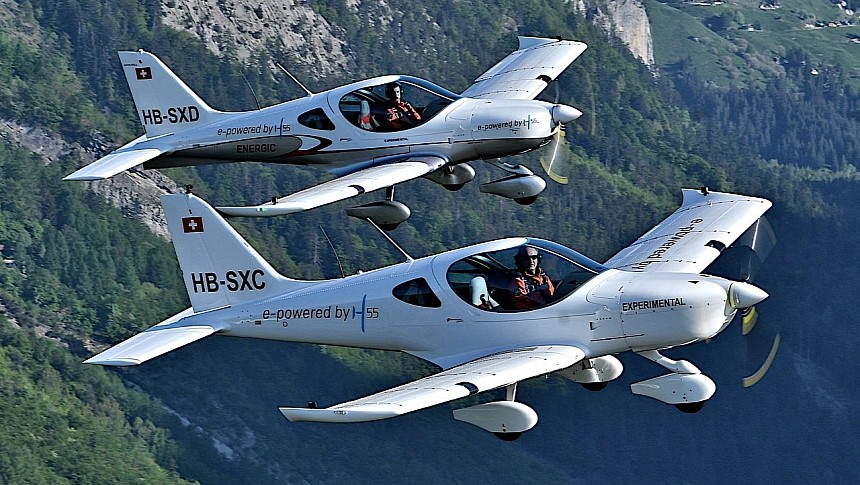Back in the fall of 2020 a small British company called Equipmake presented to the world what it described as humanity's most power-dense permanent magnet electric motor in series production. At the time, the Brits also promised it was a piece of tech that could power pretty much everything, from mining and farming equipment to supercars and, yes, even airplanes.
There were two variants shown then, a 125 kW variant weighing just 14 kg (31 pounds) and a 220 kW one that tipped the scales at 40 kg (88 pounds). It's unclear how far they managed to spread in the industry since they were first presented, but we do know who will be using a third variant, a 100 kW one, for the first time: a European aviation company called BRM, with help from Switzerland-based H55.
The motor, together with the energy storage system, electric propulsion unit, power management "and all related components and interfaces" will be included in something called the Electric Propulsion System (EPS).
This, in turn, will be installed on a new training aircraft called Bristell B23 Energic. The exact specs of the airplane were not disclosed, but given how we expect to see it flying for the first time later this year, that'll probably change soon enough.
We do know the plane is a two-seater, meant to carry the instructor and the pilot-in-training. This is, by all accounts, exactly what the EPS was meant for: CS-23 Level 1 aircraft that can carry a single passenger. With this system on, the Bristell B23 Energic should be capable of accelerating to speeds of up to 200 kph (124 mph).
We don't have any word on the battery pack of the aircraft, but the companies involved did say it should deliver "normal operations"-worth of power in just one hour of charging. The cost of operation is very low, estimated at just seven dollars per charge.
The interesting thing about the system though is that it could be adapted in the future for use on larger airplanes, opening the doors for a wider range of applications. First on the agenda is a 200 kW variant of the motor that can be used on CS-25 planes – that would be flying machines with no specified limitations on mass, usually turbine-powered.
Following the certification of the plane later this year, production is expected to start in 2025. The Bristell B23 Energic will thus join the BRM current fleet, which comprises seven aircraft models, all of them powered by Rotax engines.
Just like the others, it will be used for pilot training, thus meant for flight schools all over the world. There is no info yet on how much such an aircraft would cost.
The motor, together with the energy storage system, electric propulsion unit, power management "and all related components and interfaces" will be included in something called the Electric Propulsion System (EPS).
This, in turn, will be installed on a new training aircraft called Bristell B23 Energic. The exact specs of the airplane were not disclosed, but given how we expect to see it flying for the first time later this year, that'll probably change soon enough.
We do know the plane is a two-seater, meant to carry the instructor and the pilot-in-training. This is, by all accounts, exactly what the EPS was meant for: CS-23 Level 1 aircraft that can carry a single passenger. With this system on, the Bristell B23 Energic should be capable of accelerating to speeds of up to 200 kph (124 mph).
We don't have any word on the battery pack of the aircraft, but the companies involved did say it should deliver "normal operations"-worth of power in just one hour of charging. The cost of operation is very low, estimated at just seven dollars per charge.
The interesting thing about the system though is that it could be adapted in the future for use on larger airplanes, opening the doors for a wider range of applications. First on the agenda is a 200 kW variant of the motor that can be used on CS-25 planes – that would be flying machines with no specified limitations on mass, usually turbine-powered.
Following the certification of the plane later this year, production is expected to start in 2025. The Bristell B23 Energic will thus join the BRM current fleet, which comprises seven aircraft models, all of them powered by Rotax engines.
Just like the others, it will be used for pilot training, thus meant for flight schools all over the world. There is no info yet on how much such an aircraft would cost.






